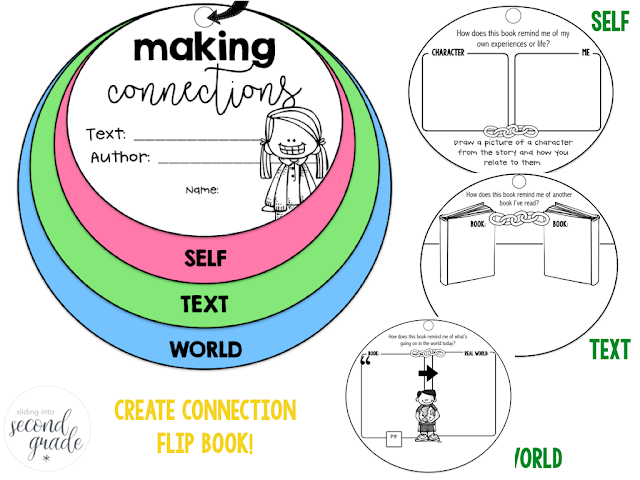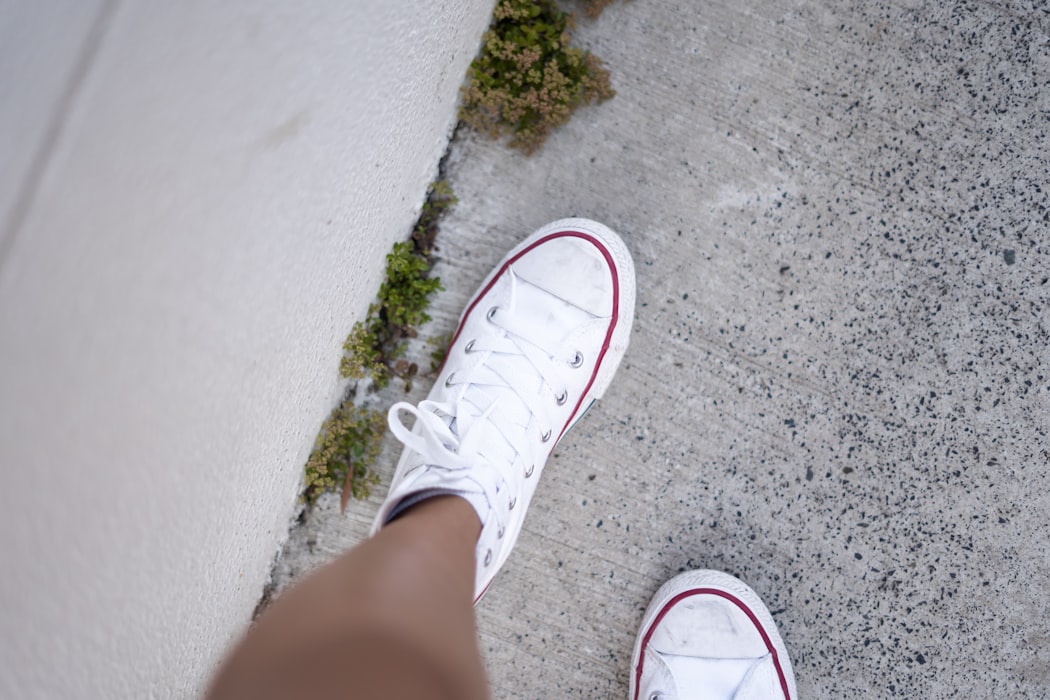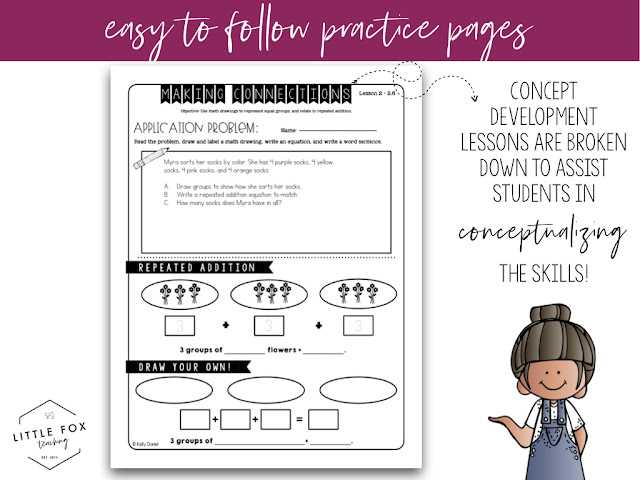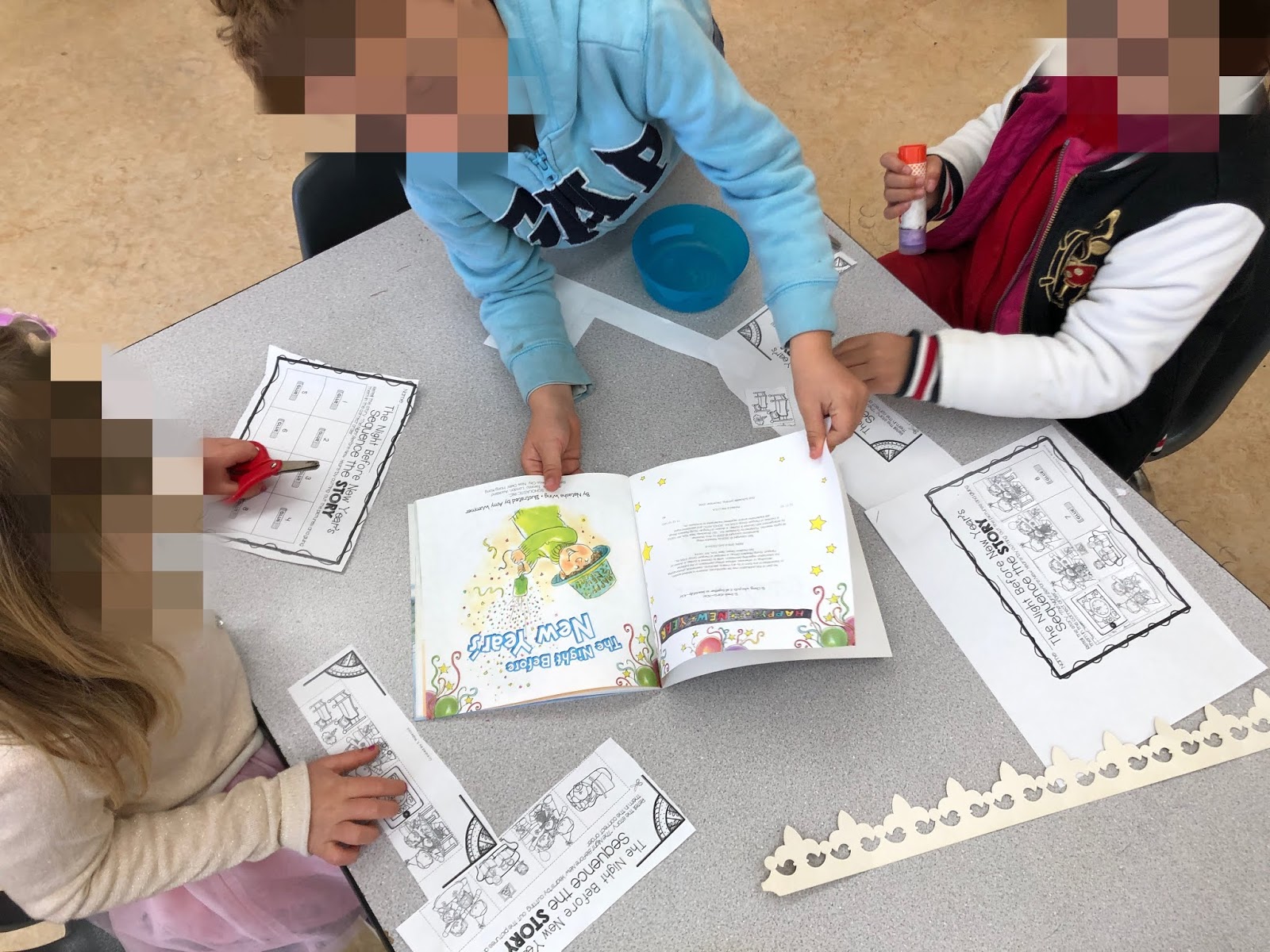January 31, 2020
Guided Reading. Made Simple.
I am going to go ahead and apologize for this post for it’s going to be a long one! However, it’s all to share with you what I’ve spent the better part of a month creating and putting together and now I get to share it with all of you!
Friends, I have for you my Guided Reading Made Simple comprehensive download!
 When I first started teaching guided reading was a daunting task. It required teachers to not only make reading sub-plans for each group and to keep track of data and assessments. I had to search all over teacher blogs and Pinterest to find these different instruction components and tried year after year new approaches to find what worked with me and my students. Needless to say I was finding a lot of resources but didn’t know how to work them into my guided reading block.
When I first started teaching guided reading was a daunting task. It required teachers to not only make reading sub-plans for each group and to keep track of data and assessments. I had to search all over teacher blogs and Pinterest to find these different instruction components and tried year after year new approaches to find what worked with me and my students. Needless to say I was finding a lot of resources but didn’t know how to work them into my guided reading block. This year I have combined all of my favorite activities as well as data tracking sheets such as anecdotal notes, running records, and reading level tracking sheets that students can complete!Let’s take a peek at everything that’s included in this download...I am a huge fan of providing as much information to parents as possible at the beginning of the year. Since reading instruction, for any grade, is largely stressed (and even used to evaluate teachers) it’s important that reading at home is made a priority.
However, most parents don’t have the proper information in order to do that.
For The Parents
I have put together a couple FAQ pages for teachers to send home that outlines and explains what guided reading is an it’s importance during the school day. I have also created a take-home resource for parents that outlines the reading skills that are being taught in 2nd grade and what to look for in student reading at home. In addition, I have a Standards Made Simple page as well that break down the literacy standards and makes them easy to understand for parents.
Cheat Sheet For Teachers
Throughout the year I have always needed my literacy standards accessible while planning for my groups. It helps me keep track of the standards I need to teach or re-teach and this flip-book is easy to make and keeps the CCS right at my fingertips without taking up space.
Assessments:
Keeping track of student progress is vital within the classroom. It allows teachers to see where each child is at and where they can take them next. These forms are great for admins to view as well as to share with parents during conferences. Taking notes and keeping them organized has never been easier!
Simply make notes yourself or use the boxes for checking off observed skills. These note-taking sheets are designed for pre-a & emergent, early, transitional, and fluent readers; because let’s be real, you’ll find yourself with kids all across the reading spectrum - even if it is 2nd grade.
Visualizing & Inferring:
Although there isn’t a specific CCS objective that relates to visualizing and inferring, it’s nonetheless important to teach or at least spend a little time practicing. Having students picture what they’re reading helps them with beginning comprehension of characters and their actions as well as inferring character feelings and actions through these same pictures. Practice as a whole group using given examples or have students practice using a text to find three details and use them to make an inference. Also, three worksheets have provided photos for students to use to make their own inferences, which can be scaffolded to practicing within their book.
Summarizing & Retelling:
I would have to say that this skill is one of the biggest, and can be challenging, that is taught in second grade (but of course it can vary by state). The biggest EOY skill is comprehension and learning to summarize what they read by using their own words to explain what happened to the characters, especially as they begin to read chapter books, can be daunting. However, these worksheets break down each skill using simple charts to break up student thinking with SWBSF, trace summary writing, a blank template, and flow charts for retelling using B-M-E.
I love incorporating flip-books because it gives students something fun to do rather than completing worksheets or writing in their journals. I always have students complete the reflection first with my assistance then they may cut out their pages to make the flip-book. It’s also great for those kinetic learners too who need some variation other than just writing!
These flip-books can make for great center activities too!
You can’t have too many posters in your guided reading area ;)
Making Connections
This section includes two worksheet templates, a foldable, and reading notebook flaps for student reflection and note-taking. I like having a few different ways to practice this skill of which are super easy to prepare!
Discussing how we connect to what we read is just as important as being able to write our thoughts down. Here are reference posters for students to use when thinking about how they reflect through text-to-text, text-to-self, and text-to-world connections. These sentence starters are helpful in giving students a foundation to use when making and writing out their connections and how it relates to the story.
Student Reference Posters!
I took a different take on the popular reading strategy posters. The animals are popular for the younger kiddos, however I think it’s important to stress the skill and what it looks like. So, instead of using the animal references (i.e. Lips The Fish, Tryin’ Lion, etc.) I have taken the same skills and created colorful posters for students to use as a reference during groups.
I love including these fluency posters since fluency is an important skill that us teachers look for once students reach the early/transitional + reading level. Have kids understand what fluency is just like we do with the reading strategies stressing: punctuation, phrasing, rate, intonation, expression, and accuracy.
My hope is that you all find this resource as helpful as it has made me in years past! Catch more details and pick it up for yourself over at my TpT shop!
January 24, 2020
Utilizing Your Teaching Cart
This post may contain affiliate links to which I will earn a small commission.
You can read more about my disclosure policy here.
You can read more about my disclosure policy here.
 |
| cart | amazon |
The very first thing I realized when looking online for a cart was that the pre-made teacher ones from places like Lakeshore are ridiculously expensive. Although they have great functionality, I wanted to branch out and see what other teachers found useful and that would be kind to my/school's budget.
Here are a few ideas I found around the web...
Maximizing space and purpose.
 |
| photo: unknown |
This particular cart uses hidden storage on the inside, but I'm looking for a way to incorporate the goodness of a 10 drawer rolling cart into a design like this one. I will be running learning centers soon and the teacher before me used her 10 drawer cart for the materials for her different center rotations.
Hmmm.....
 |
| photo |
Outside/Inside Organization
I found this idea from a teacher on Twitter by the name of @Srta_Will (who as you can guess is a Spanish pop-in teacher). She has this system down and her use of a shoe organizer for supplies is wonderful! Another great tool for the sides of the cart, which creates easy access for students!What I can also appreciate is here ascending file organizer she uses on top of her cart. It makes filing student work a breeze or even prep materials for lessons. I see she uses a chime for transitions and can easily wheel her cart from class to class.
Top of cart organization
 |
| photo |
Thankfully I'll be incorporating a LOT of interactive notebooks for whole group lessons that will lead into center choice work. I am also looking to find a convenient place to keep such work and in a way that's organized. I've already had a system like this with hanging folders to keep finished work that'll be filed to go home each week. I plan to continue this idea until I find something better.
Also, these crates with hanging folders are great for student portfolios! In kindergarten it's always nice to track student progress with their writing or other skills and this is an easy way to do just that!
There are so many unique ways a teacher on-the-go can adapt their carts to their specific needs. I am in the process this year to find new and innovative ways to make my little drawer cart more useful. I'm always open to ideas and should you also be an on-the-go teacher, or pop-in teacher, I'd love to hear your tips, tricks, and advice!
January 19, 2020
Doubling & Even/Odd Strategies with Eureka Math | Second Grade
Hello there!
We've been officially back to school for about 3 weeks now from our winter break and somehow I can't believe we're halfway through the school year. Starting fresh at a brand new school has been both exhilarating and exhausting all at the same time - so apologies for not having the time to get on here and blog as often as I would like.
However, I have been busy with the ever popular modules for Eureka Math. I am so thrilled that so many teachers have loved my other modules and have been begging for more. They can be quite cumbersome to dig through, but I'm happy to announce yet another module is now L-I-V-E over at my TpT shop!
Let's take a peek at Module 6!
Application Sets & Concept Development
What makes this resource so beneficial to my fellow teachers is the simplicity of the student work pages. My number one complaint about the original workbooks from Eureka Math were there were too many practice problems and the concept development lessons needed more scaffolding. So, inspired by the needs of my classroom and knowing I wanted to incorporate Eureka Math more effectively, I created my own versions of the modules.
Since then, I've been able to supplement my lessons with these student practice pages complete with application problems and visuals to the concept development lessons included in the teacher manual.
Sprints & Fluency Practice
Sprints and fluency practice are key to each module and are included within this resource! The sheets match exactly to the answer keys provided in the teacher manual so no need to fumble with prep.
Visualized Lessons!
I know for me I am a visual learner - and teacher! - which means I know I have students who could benefit from seeing the concept development portion of the lesson be a little clearer and with the appropriate scaffolding. Each lesson has easy-to-follow activities that pairs exactly with the concept development.
Second Grade
First Grade
January 8, 2020
Why Teachers Shouldn't Be Allowed to Wear Jeans
One of the biggest dress code debates that I've seen/heard over the years has been all about jeans and whether or not teachers should be allowed to wear them. I've worked for districts and schools where jeans are both encouraged and deeply forbidden. I understand both sides of the debate...on one hand schools want their staffs to dress "professionally" (and somehow jeans can't be styled professionally?) and to only enjoy them on days like casual Fridays (when typically paired with school-specific flare) or field trips. On the other hand there's an encouragement from administrators as long as they're tasteful and don't distract or inhibit one from from doing their job.
With this in mind, I present to you the top reasons why teachers shouldn't be allowed to wear jeans to work...
Teachers are just happier in jeans.
I have yet to meet a teacher that isn't happy to wear jeans to work. Wearing jeans allows us flexibility in our style as well as a mysterious ability to get ready in a snap in the mornings.Teachers are more comfortable in jeans.
Teachers are constantly on their feet, but there's a large part of the day where we're on the carpet, kneeling down, picking things up, etc. Doing those things can be such a challenge when wearing dresses or skirts. Especially in the younger grades, teachers are often on the ground with their students and wearing jeans allows us to maneuver quickly without worrying on being exposed orTeachers are more prepared in jeans.
In my last teaching position I had not only 20 four/five year olds to look after, but my school was full inclusion with students who have special needs. With that being said, I needed to be prepared to attend to those students of mine who had tendencies to elope (escape the classroom), become triggered, escalate in their behaviors, or otherwise become a safety risk to themselves or their peers. Wearing jeans allowed me to be ready every day to move and be flexible in case I had to de-escalate a situation in my classroom.Teachers relate better to their students in jeans.
By wearing jeans, students see their teachers differently than those who wear more "work wear" style clothes. As we aim to create an inclusive classroom culture, it's important to know that how we dress impacts our student's impressions of us as their teachers. Yes, this can be debated both ways, but I believe I establish stronger relationships at the beginning of school when I can style my jeans and appear less authoritative.Jeans can be styled professionally...
Since jeans are becoming ever so popular in work settings these days, it is possible (thanks to Pinterest) to style a jeans look and still maintain professionalism. It's all about administrators being firm and concise about the style of denim teachers can wear to work. The more specific in what is either allowed or not allowed helps cut out misunderstandings or awkward conversations.And to be fair, most teachers dress conservatively anyways... #cardigans.
I have to know, do you agree with allowing jeans
or do you find them unprofessional?
January 3, 2020
Celebrating New Years in Kindergarten
This post contains Amazon affiliate links. I earn a small commission for every purchase made using my links. Thank you for supporting this blog!
We're officially back at school and winding up our second half of the school year. It was so great to have our holiday break to refresh, recover, and prepare for the final few months of school. I'm so excited to kick off this new year with a discussion about resolutions. Here's a peek at how we celebrated New Years in kindergarten!
New Years Resolutions
 When we came back from our two week winter break I knew I wanted to kick off our new year with a discussion about goals. In kindergarten, the concept of goals is a bit tricky, but I believe it's never too soon to start introducing the idea that they can always strive to improve or learn something new.
When we came back from our two week winter break I knew I wanted to kick off our new year with a discussion about goals. In kindergarten, the concept of goals is a bit tricky, but I believe it's never too soon to start introducing the idea that they can always strive to improve or learn something new.Because I work at a bilingual school, holidays like New Years isn't necessarily something my students know about. It was fun to share New Years traditions and discuss how a new year, for a lot of people, is a time of reflection. I introduced the new vocabulary word: resolution and related it to goal setting.
We read the story The Night Before New Years to highlight a few of the common traditions of staying up till midnight, decorating your home, making resolutions, and counting down. From there we talked more about setting resolutions for ourselves and practiced writing them with invented spelling. I'm always so impressed to see how well my students are sounding out their words come January!
Here are a few of their goals...
 |
| new years craftivity | TpT |
 |
| pick up this resource from my TpT shop |
Story Sequencing
For one of my centers during workshops I dedicated to sequencing the story we read The Night Before New Years. We had been working on story sequencing for the last couple of weeks and I love this book companion resource from Lovin' Little Learners! It was a little tough trying to find applicable centers that incorporate this story, but my students really enjoyed Sara's cut and paste sequencing activity. I placed the book in the center as a tool to help students remember which even happened first.
What are your favorite New Years activities to do with your students?
Link up your posts in the comments!
Subscribe to:
Posts (Atom)
Hey there!


























